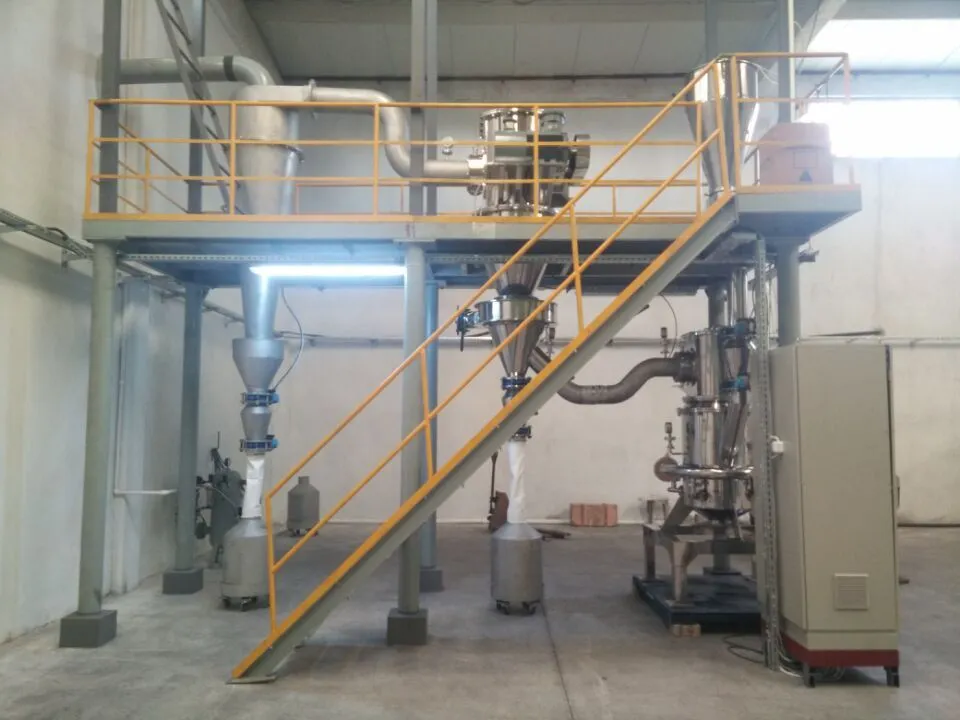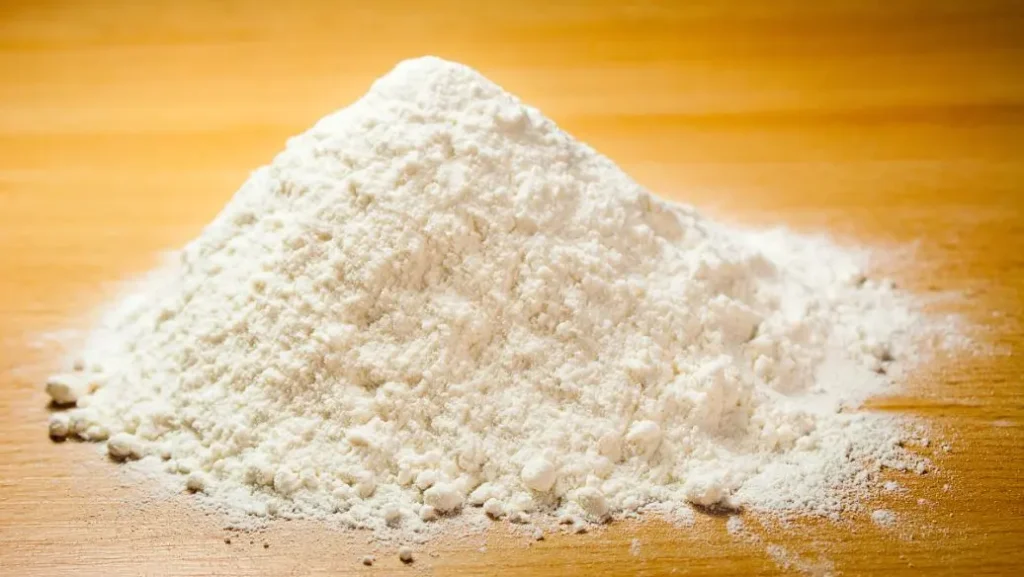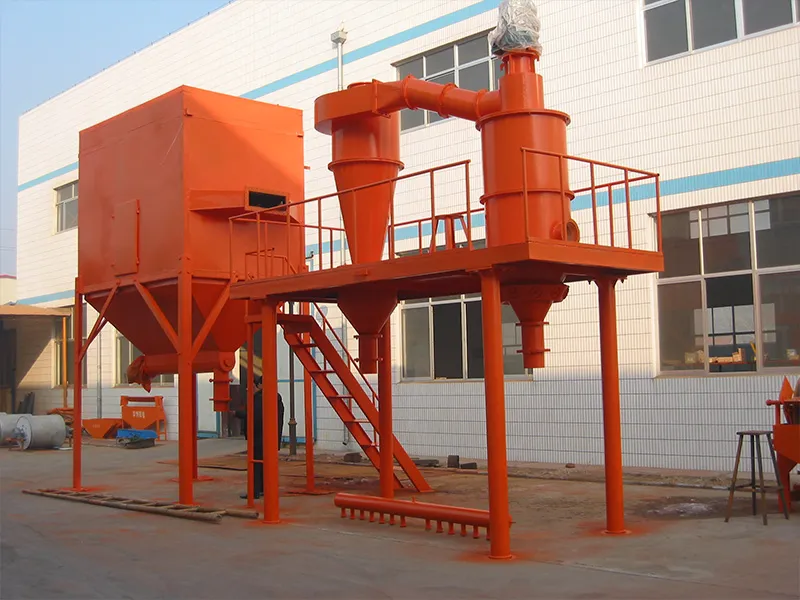As a technical supplier specializing in ultrafine powder processing equipment, Qingdao EPIC Powder Machinery Co., Ltd. is committed to providing our customers with in-depth knowledge of operations for air classifier mills. Precise classification is fundamental to achieving desired particle size distributions and product quality in various industries, including pharmaceuticals, chemicals, food, and minerals.
This article details the crucial factors that influence classification performance in air classifier mills (ACMs), offering insights into how these variables can be optimized for superior milling and classification results.

Understanding Air Classifier Mills: An Overview
Air classifier mills integrate mechanical impact grinding with an internal air classifier wheel to simultaneously pulverize material and separate particles by size. Feed material enters the grinding chamber where it is subjected to impact forces from rotating hammers or blades. The resulting mixture of particle sizes is then transported by an airflow through a classifier wheel that separates fine particles from coarser ones based on size and density.
The ability to precisely control classification is key to producing powders with narrow size distribution and well-defined maximum particle size, essential for application consistency and process efficiency.
Core Classification Factors in Air Classifier Mills
1 Classifier Wheel Speed
The rotational speed of the classifier wheel is the most direct and influential factor determining the particle cut size (top size) of the product. Faster speeds impart greater centrifugal force to particles, causing larger ones to be thrown outward and retained in the grinding zone for further size reduction, while finer particles are allowed to exit as product.
- Higher wheel speed → finer product with smaller maximum particle size.
- Lower wheel speed → coarser product with larger particle size.
This parameter is typically adjustable in real time, enabling operators to fine-tune product size to meet stringent specifications.
2 Airflow Volume and Velocity
Airflow through the mill carries particles from the grinding chamber to the classifier and then out as finished product. Both the volume (amount) and velocity (speed) of air influence classification:
• Airflow volume acts as the carrier force, transporting particles through the system. Maintaining a constant airflow volume is essential to stable classification performance.
• Air velocity at the classifier face depends on wheel size, number of blades, and wheel speed. Higher velocity increases drag force on particles, helping finer particles pass through and rejecting coarser particles.
Adjusting airflow along with classifier wheel speed allows for precise control over particle separation efficiency.
3 Classifier Wheel Design and Geometry
The physical design of the classifier wheel affects air velocity distribution and centrifugal forces experienced by the particles:
- Number of blades (vanes): More blades increase centrifugal force, leading to finer classification. Fewer blades allow larger particles to exit, resulting in coarser product.
- Blade height and angle: Affect the open surface area and air velocity, influencing particle drag forces.
- Blade orientation: Some classifier wheels use canted blades angled to improve top-size control and reduce bypass of oversize particles.
Selecting the appropriate wheel design based on material properties and product requirements is crucial for achieving optimal classification.

4. Feed Material Characteristics
The properties of the material being processed greatly influence classification efficiency and outcomes:
• Particle density: Heavier particles experience greater centrifugal force, affecting their classification behavior.
• Particle shape and hardness: Irregular shapes and hard materials may respond differently to impact and airflow, impacting grinding and subsequent classification.
• Moisture content: High moisture materials may cause agglomeration, leading to poorer classification and clogging issues. Pre-drying or special handling may be required.
• Feed particle size: Pre-crushing or screening feed to suitable size ensures efficient grinding and classification.
Understanding and adapting to feed material characteristics is essential for consistent performance.
5. Grinding and Feeding Conditions
- Rotor / Hammer speed: Influences the impact energy imparted to particles, affecting the size distribution entering the classifier. Adjusting rotor speed can optimize the balance between grinding and classification.
- Feed rate: A steady, controlled feed rate maintains consistent material loading and airflow dynamics. Overfeeding can lead to reduced classification efficiency and coarser products.
- Grinding chamber liner design: Liners can be grooved or smooth to alter particle residence time and impact force, indirectly affecting classification outcomes.
Optimizing feed and grinding conditions ensures the classifier receives properly sized material for effective separation.
6. System Air Pressure and Temperature
• Air pressure: Stable and adequate air pressure is essential for maintaining the airflow volume and velocity needed to carry and classify particles correctly.
• Temperature: Some materials are sensitive to heat generated during grinding or air compression. Controlling temperatures prevents degradation and maintains particle integrity.
Well-controlled air supply enhances classification stability and product quality.
Conclusion
The classification performance of air classifier mills hinges on a delicate balance of mechanical and process parameters. From the classifier wheel rotation and design, precise air handling, to feed and grinding conditions, each factor plays a pivotal role in determining the particle size distribution and quality of the final product. Mastering these factors enables producers to deliver ultrafine powders meeting exacting industrial standards.
At Qingdao EPIC Powder Machinery Co., Ltd., we combine deep technical expertise with advanced equipment design to help clients optimize their air classifier milling processes for maximum efficiency and product excellence.
For further technical consultation or equipment supply, please contact our specialists who are ready to support your powder processing needs with tailored solutions.
If you need, I can help draft this article in a ready-to-publish format tailored to your website style. Let me know!

